Brunelleschi's Dome: its history and secrets
Samuele Caciagli, Opera di Santa Maria del Fiore's architect, leads us to discovery of the masterpiece symbol of the Florence.
An exclusive journey in collaboration with the Opera di Santa Maria del Fiore from the terraces to the dome, inside the cathedral that is the symbol of our city. Lights and shadows, in a crescendo of chiaroscuro, trace an exciting story.
It tells the story of a man, Filippo Brunelleschi, and his faith, which led him to build an "impossible" architectural work, but which was completed in just sixteen years. It was an exceptional building site where futuristic machines were designed, where the use of wood, which was very expensive at the time, was limited as much as possible, and where the safety of the workers was paramount. During the entire construction period, there was only one white death. Samuele Caciagli, architect in charge of the technical area of the Opera di Santa Maria del Fiore, guided us through this discovery.
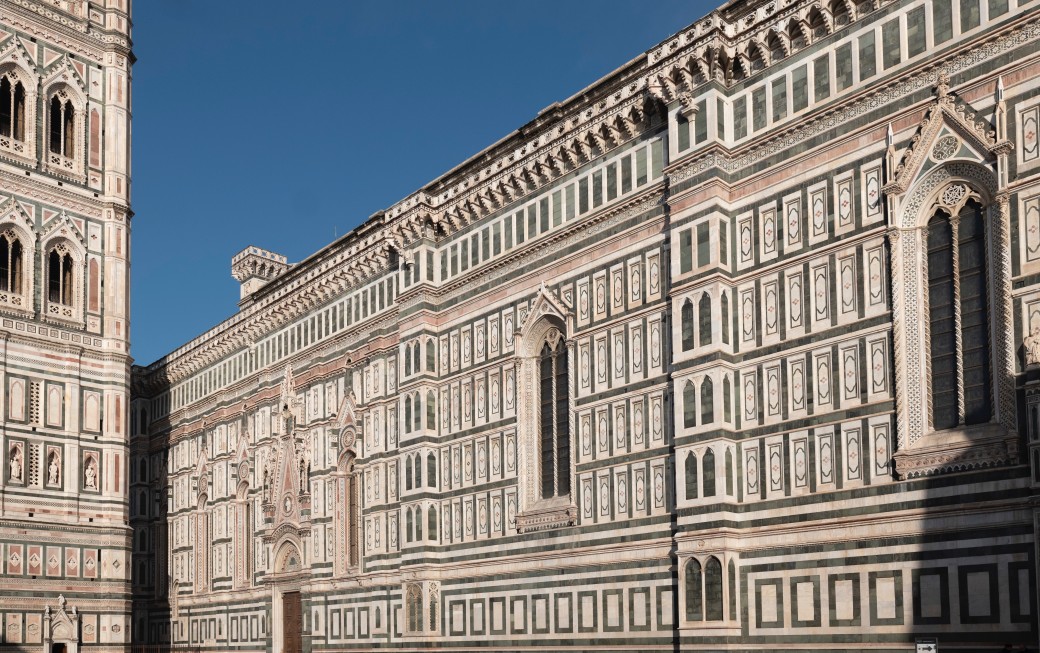 Santa Maria del Fiore - Florence
Santa Maria del Fiore - Florence
"Santa Maria del Fiore is one of the most important Gothic cathedrals in Europe," explains the architect at the start of our visit. "It was built in 1296 based on an idea and design by Arnolfo Di Cambio, and developed thanks to the work of Giotto, Pisano, and Talenti, culminating in the magnificent masonry dome, still the largest in the world, created by Filippo Brunelleschi between 1420 and 1436.
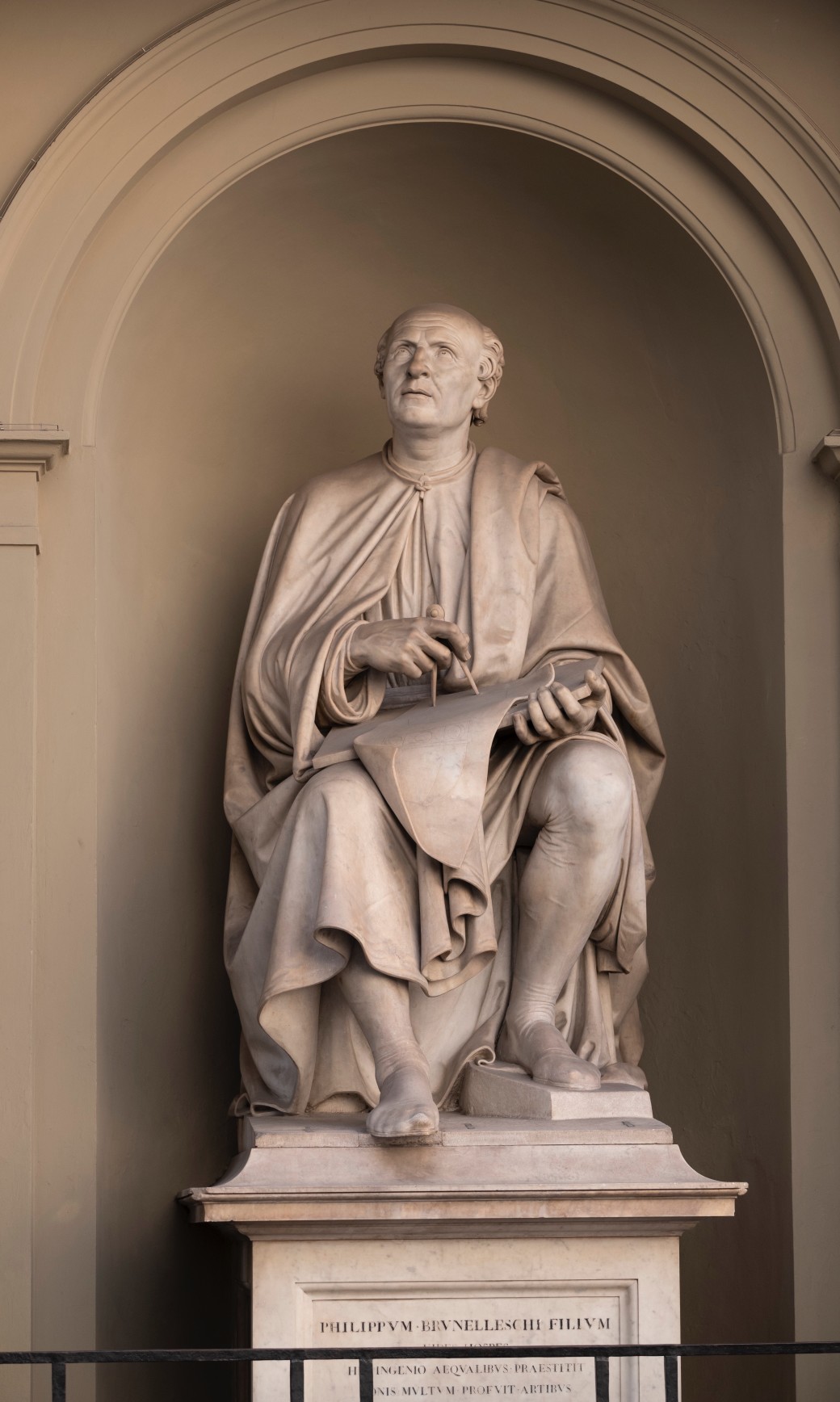 Filippo Brunelleschi
Filippo Brunelleschi
"Filippo Brunelleschi was the absolute protagonist of the 15th century: he was the architect of the Renaissance, the architect of Humanism. He was responsible for the construction of the largest masonry dome ever built in the world, for the completion of the most important building site of the time," says Samuele, with vibrant admiration, "It was he who, through a series of ingenious intuitions, allowed this building site to be completed in just sixteen years from the start of work".
Architect Caciagli describes Brunelleschi's work and his clear and effective words become images: "It is a particular construction site that is suspended from the ground, that does not rest, that works as a cantilever, it is the solution that allows Filippo to win the competition announced by the Opera di Santa Maria del Fiore and to start work".
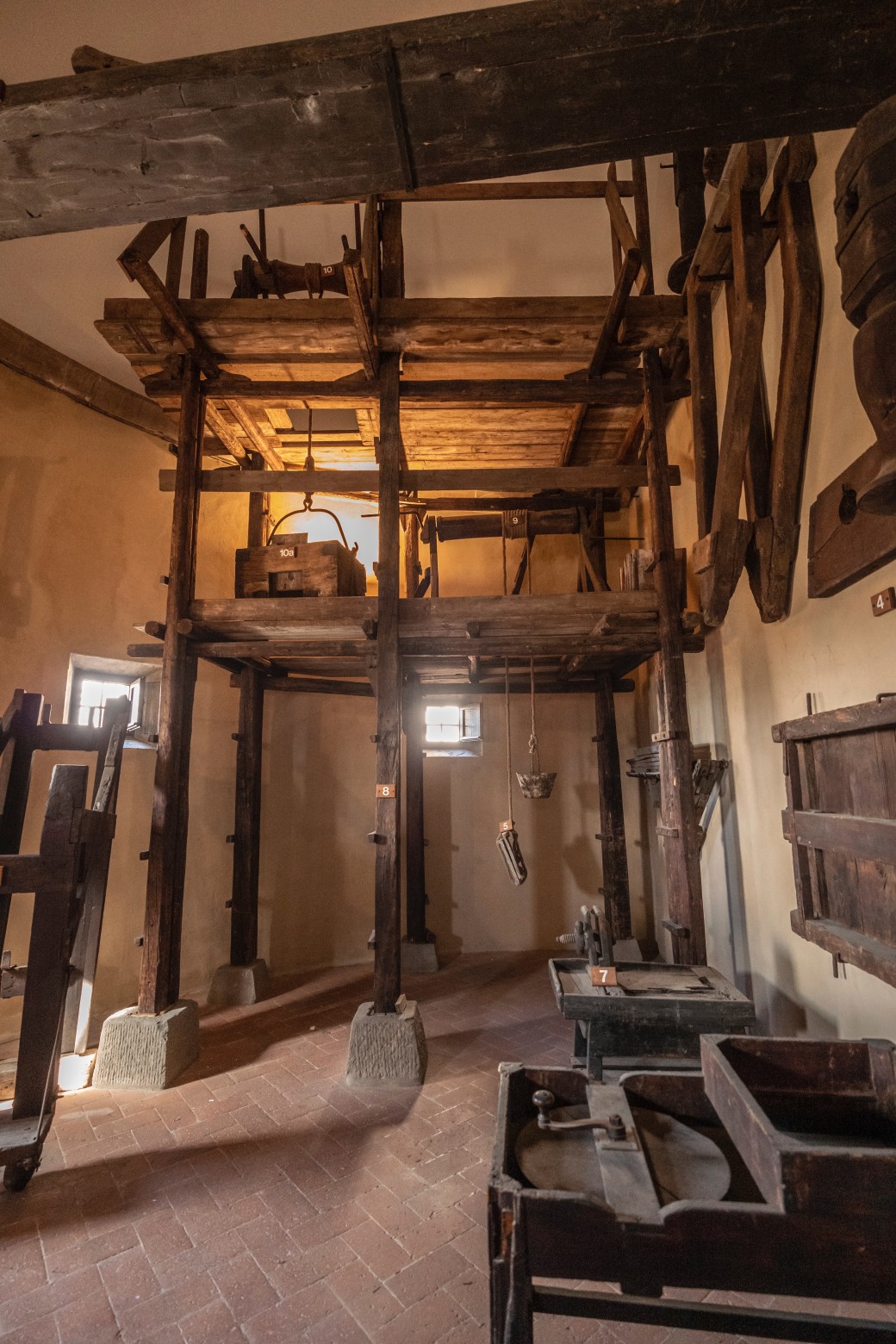 Construction machines
Construction machines"One of Brunelleschi's main insights was the design and construction of large and important construction machines," he continues, "force multipliers driven by animals, which allowed the heavy loads to be carried to the top of the dome.
He concludes by revealing some of the work's innovative design solutions: "One of the secrets of Brunelleschi's dome is its construction technique, i.e. the laying of bricks in a herringbone pattern, bricks laid on each floor and alternating with rows of other bricks laid by knife, to create a self-supporting structure. The two domes create a cavity characterised by the presence of corridors running the entire perimeter between the two structures".
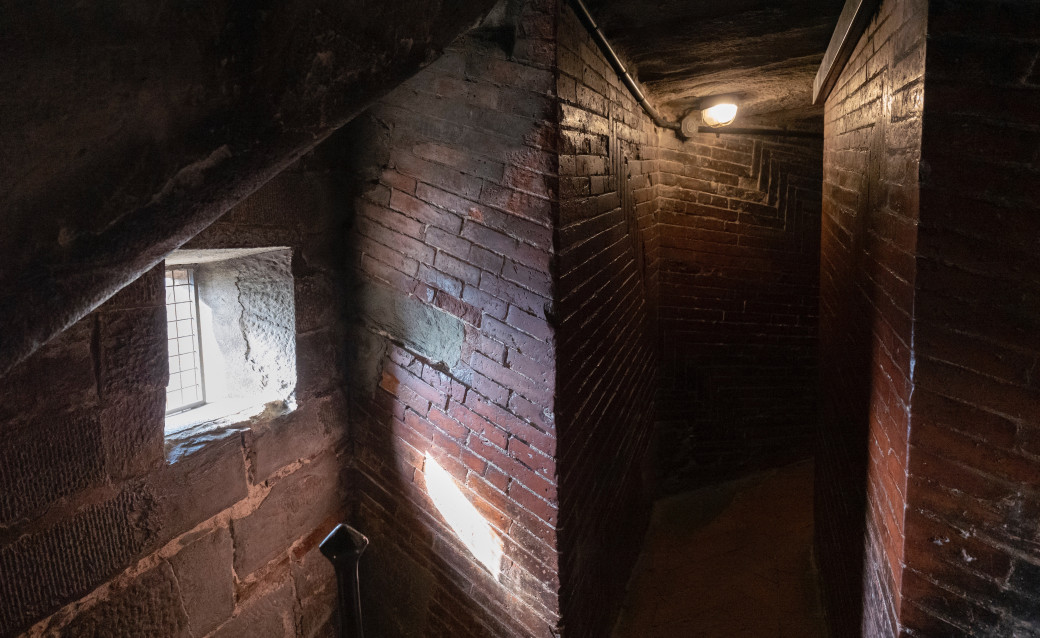 Herringbone bricks - detail
Herringbone bricks - detail"Filippo Brunelleschi completed the work in 1436, after having started in 1420. He also designed the lantern for his dome but was never able to realise it because he died before work began. Its intrados is completely decorated with a Last Judgement made in the following century by Federico Zuccari and Giorgio Vasari".
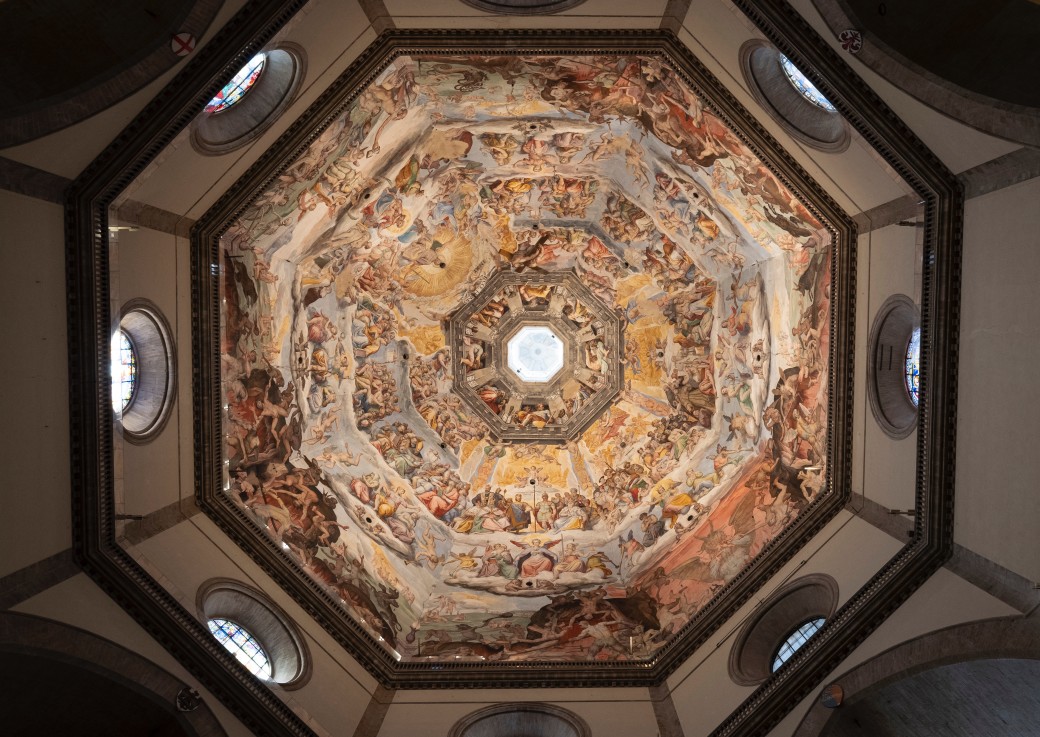 The Dome - Frescos
The Dome - FrescosThis is the end of our visit, with a last glance from the terraces over a marvellous city that seems to bow before such perfection.
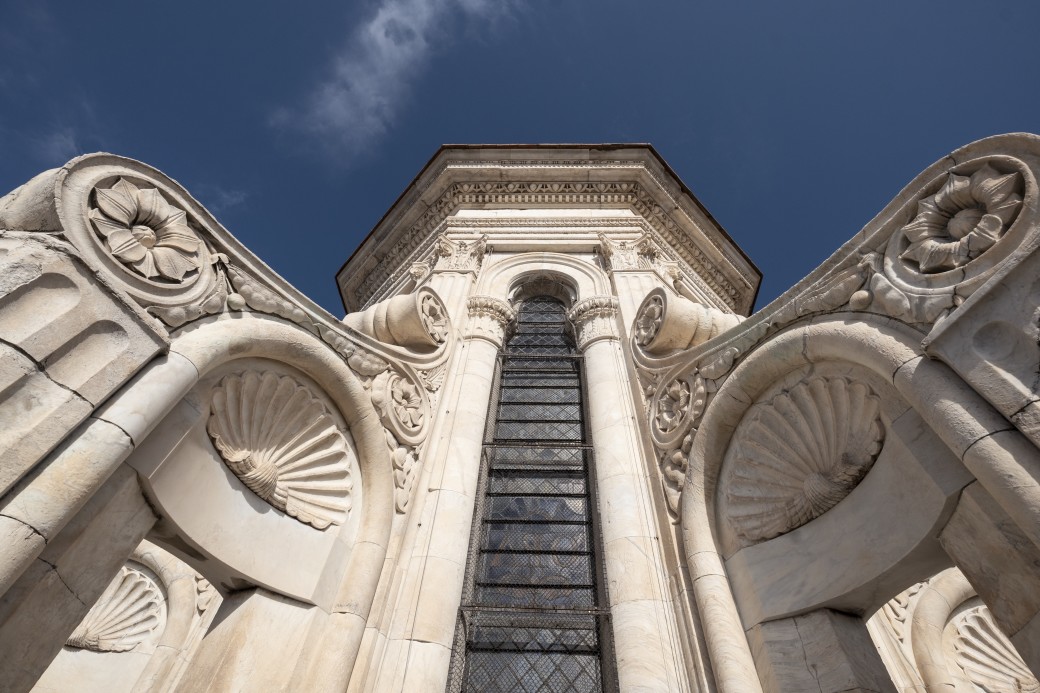 The Dome - View
The Dome - View







